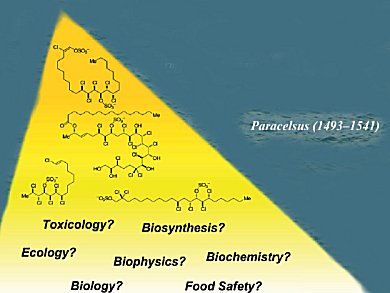Little is known about the biology, the biochemistry and, importantly, the toxicology of chlorosulfolipids, which constitute a class of polychlorinated natural products that are originally produced by certain fresh- and seawater microalgae species and that have been detected in and isolated from certain edible mussels. Although chemical defense has been identified as the purpose of certain halogenated metabolites, the inherent role of halogens in natural products is far from well understood.
Chlorosulfolipids have long been considered as intractable synthetic challenges since their discovery in the late 1960s. Only in the last few years have successful total syntheses of these natural products been developed, largely as the result of detailed work carried out by the research groups of Carreira, Vanderwal and Yoshimitsu. Christian Nilewski and Erick M. Carreira, ETH Zürich, Switzerland, summarize the progress in the synthesis and study of these fascinating natural products.
The four chlorosulfolipids hexachlorosulfolipid, danicalipin A, malhamensilipin A, and undecachlorosulfolipid A are some of the best characterized in the literature. Yet, total synthesis studies of the nominal structure of undecachlorosulfolipid A revealed that the natural product has been misassigned.
The authors say that the stage is set for detailed investigation. Clearly, the story has just begun.
- Recent Advances in the Total Synthesis of Chlorosulfolipids,
Christian Nilewski, Erick M. Carreira,
Eur. J. Org. Chem. 2012, 1685–1698.
DOI: 10.1002/ejoc.201101525




